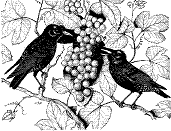Vertebrate Pest Conference: Proceedings

Vertebrate Pest Conference Proceedings: 8th (1978)
Date of this Version
March 1978
Document Type
Article
Abstract
Technical assistance was given to Compañía Azucarera Hondureña, S.A. (Agro-Industrial Co.), Honduras, Central America, to determine if a campaign against noxious rodents to agriculture crops was needed. Several trappings were carried out at different places using snap traps to determine the population structure of rodents associated with the crop, and live traps to determine the index or density of the Sigmodon hispidus rat population, which was identified as being responsible for the damage to sugarcane. Results were 43.24% adult males, 14.86% young males, 31.41% adult females, and 10.47% young females. Of the adult females captured, 54.83% were pregnant with an average of 3 to 4 embryos per rat. A control demonstration combat was carried out at one of the experimental stations with a bait prepared with 2% zinc phosphide in a place where it had been previously determined there was a population of 39 rats per hectare. After such control, the population was reduced to 18 rats per hectare, which represents an efficiency of 53.85%. An evaluation of damages was also measured at different places to determine the degree of loss caused by the rats, which proved to be 22.79% damage. The size of the sample was estimated in 3 samples per hectare, with a level of confidence of 95%.

